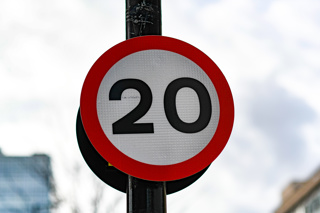One in five (20%) patients admitted to trauma centres were involved in road crashes in 2016 according to new figures obtained by Brake.
The road safety charity says road collisions were the second largest cause of trauma admissions, after falls from less than two metres.
Last year, 11,486 road users – the equivalent of 31 a day – were admitted to trauma centres in England and Wales with life-threatening injuries.
The regions with the highest proportion of road collision trauma patients were the Thames Valley (25%), North West London (23%), the West Midlands (23%), the East Midlands (22%) and East England (22%).
Brake commissioned an analysis by the Trauma Audit and Research Network (TARN), which records information about patients admitted to trauma centres.
It also analysed data covering 75,820 road crash victims admitted to trauma centres during the last decade. The data reveals that young people (16-25 year olds) are the most affected age group, accounting for more than one in five (21%) road traffic trauma admissions, including the largest group of vehicle passenger (32%), motorcycle (27%) and driver (21%) admissions.
In the past decade, 5,657 children (under the age of 16) were admitted to a trauma centre following a road crash, making up seven per cent of all admissions; almost a third (32%) of these were admitted with serious head injury. Children also comprise the biggest age group for pedestrian casualties, accounting for nearly one in six (17%) trauma admissions.
According to the analysis, motorcyclists comprise the largest proportion of admissions (25%), followed by drivers (23%), pedestrians (21%), cyclists (16%) and vehicle passengers (12%).
Due to the severity of many road traffic collisions, almost a quarter (24%) of trauma patients go straight to intensive care following a crash. In terms of road user type, almost a third (32%) of pedestrians, and almost a quarter (24%) of cyclists, suffer serious head injuries, while over a quarter (28%) of drivers suffer severe chest injuries. Almost two in five (39%) motorcyclists are admitted with serious injury to their arms or legs. Five per cent of all admissions in 2016 later died from the injuries sustained.
Recent figures from the Department for Transport reveal that exceeding the speed limit or travelling too fast for conditions contributed to 349 fatal collisions on roads in Britain last year – almost a quarter (22%) of all fatal crashes. Travelling at higher speeds increases the distance it takes to stop in an emergency – both in terms of thinking and braking time – increasing the severity of any crash, the risk of loss of life and the extent of serious injury.
The analysis has been published at the start of the UK’s biggest road safety event, Road Safety Week (20-26 November), coordinated by Brake. This year, thousands of organisations, schools and community groups are backing its Speed Down Save Lives campaign, helping to raise awareness about the dangers of driving too fast.
Jason Wakeford, director of campaigns for Brake, said: "Not only do needless road collisions cause untold suffering but they also place an enormous strain on the NHS and other public services.
"Speeding is a factor in many deadly crashes and remains a major problem. Driving is unpredictable and if something unexpected happens on the road ahead, such as a child stepping out from between parked cars, it's a driver’s speed that determines whether they can stop in time and, if they can’t, how hard they will hit. That's why we're encouraging everyone to 'Speed Down Save Lives' for Road Safety Week this year.
"Brake is also calling for a default 20MPH limit in all built-up areas, increased enforcement and 'Intelligent Speed Adaptation', which helps drivers stay within the limit, to be fitted as standard to new vehicles."





















Login to comment
Comments
No comments have been made yet.